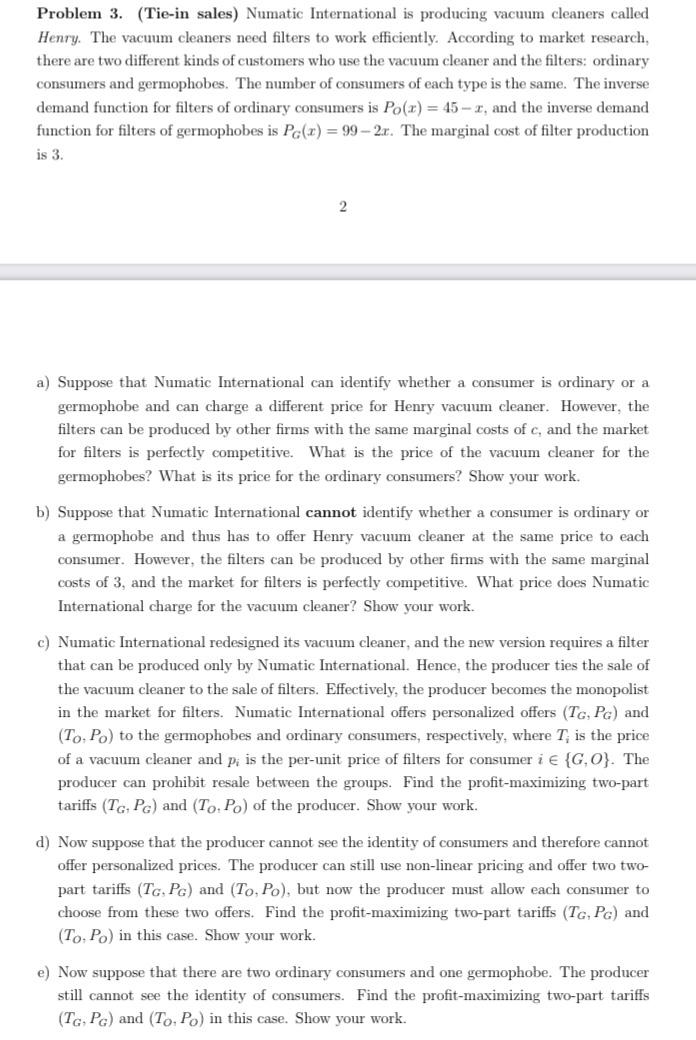
Problem 3. (Tie-in sales) Numatic International is producing vacuum cleaners called Henry. The vacuum cleaners need filters to work efficiently. According to market research, there are two different kinds of customers who use the vacuum cleaner and the filters: ordinary consumers and germophobes. The number of consumers of each type is the same. The inverse demand function for filters of ordinary consumers is PO(x)=45x, and the inverse demand function for filters of germophobes is PG(x)=992x. The marginal cost of filter production is 3. a) Suppose that Numatic International can identify whether a consumer is ordinary or a germophobe and can charge a different price for Henry vacuum cleaner. However, the filters can be produced by other firms with the same marginal costs of c, and the market for filters is perfectly competitive. What is the price of the vacuum cleaner for the germophobes? What is its price for the ordinary consumers? Show your work. b) Suppose that Numatic International cannot identify whether a consumer is ordinary or a germophobe and thus has to offer Henry vacuum cleaner at the same price to each consumer. However, the filters can be produced by other firms with the same marginal costs of 3 , and the market for filters is perfectly competitive. What price does Numatic International charge for the vacuum cleaner? Show your work. c) Numatic International redesigned its vacuum cleaner, and the new version requires a filter that can be produced only by Numatic International. Hence, the producer ties the sale of the vacuum cleaner to the sale of filters. Effectively, the producer becomes the monopolist in the market for filters. Numatic International offers personalized offers (TG,PG) and (TO,PO) to the germophobes and ordinary consumers, respectively, where Ti is the price of a vacuum cleaner and pi is the per-unit price of filters for consumer i{G,O}. The producer can prohibit resale between the groups. Find the profit-maximizing two-part tariffs (TG,PG) and (TO,PO) of the producer. Show your work. d) Now suppose that the producer cannot see the identity of consumers and therefore cannot offer personalized prices. The producer can still use non-linear pricing and offer two twopart tariffs (TG,PG) and (TO,PO), but now the producer must allow each consumer to choose from these two offers. Find the profit-maximizing two-part tariffs (TG,PG) and (TO,PO) in this case. Show your work. e) Now suppose that there are two ordinary consumers and one germophobe. The producer still cannot see the identity of consumers. Find the profit-maximizing two-part tariffs (TG,PG) and (TO,PO) in this case. Show your work







